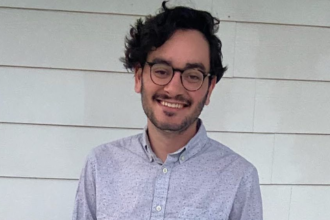Introduction to dee dee blanchard released photos
The recent release of photos related to Dee Dee Blanchard released photos has ignited a wave of reactions across social media and news outlets. For many, these images serve as a haunting reminder of a tragic story that captivated the world. As details emerge about her life and the events surrounding it, curiosity continues to grow regarding their significance. What do these photos reveal about the complexities of trust, deception, and family dynamics? Dive in as we explore this intriguing case and its impact on public perception while uncovering layers behind the lens.
Background information on the photos released
The recent release of photos related to Dee Dee Blanchard has sparked intense public interest. These images depict moments from her life and the complex relationship she had with her daughter, Gypsy Rose.
Captured during various family events, these photographs showcase a seemingly normal existence. However, they also hint at the underlying turmoil that defined their lives together. The stark contrast between appearance and reality adds layers of intrigue to the narrative.
As details surrounding their story emerged, these visuals became essential in understanding the dynamics at play. They serve as a poignant reminder of how perceptions can be misleading. Each picture tells its own story—one that many are eager to dissect and discuss.
Moreover, this release raises questions about accountability and ethics in sharing such personal images with the world. It’s a delicate balance between informing the public and respecting individual privacy.
The significance of the photos in relation to the case
The recent release of photos related to Dee Dee Blanchard holds immense significance. They provide a rare glimpse into the life and environment surrounding Gypsy Rose Blanchard, who was subjected to years of abuse.
These images highlight the stark contrast between public perception and reality. Many viewed Dee Dee as a devoted mother, but these photographs challenge that narrative. They serve as evidence of manipulation and control.
Moreover, they evoke empathy for Gypsy Rose. The visuals allow viewers to connect on an emotional level with her harrowing story. This humanizes her experience far beyond mere headlines or court documents.
As discussions around these photos unfold, they also raise questions about accountability in cases like this one. How do we balance justice with privacy? The implications are profound and complex in a world eager for sensationalism while seeking truth.
Analysis of the reaction to the photos from the public and Gypsy Rose Blanchard
The release of the Dee Dee Blanchard photos sparked a wave of intense reactions across social media and news outlets. Many viewers expressed horror and disbelief at the images, which starkly contrasted with the previously perceived narrative surrounding Dee Dee’s life.
Gypsy Rose Blanchard’s response added another layer to this complex story. She voiced her feelings about seeing those personal moments exposed for public consumption. It was a blend of anger and confusion for her—emotions that resonated with many who followed her journey.
Public sentiment ranged from sympathy towards Gypsy to outrage directed at how such private materials could be shared so freely. The discourse highlighted not just the tragedy of their circumstances but also raised ethical questions around sensationalism in true crime narratives.
This case serves as a reminder that behind every headline lies an intricate web of human emotion, pain, and complexity.
Impact of social media on cases like this
Social media has transformed the landscape of criminal cases, serving as a double-edged sword. On one hand, it amplifies public awareness and engagement. Platforms like Twitter and Instagram allow people to share their thoughts instantly, often driving conversations that might have otherwise remained in niche circles.
On the other hand, this rapid dissemination of information can complicate legal proceedings. Misinformation spreads quickly online, creating false narratives around sensitive cases. Public opinion can sway juries or influence the actions of law enforcement.
The case of Dee Dee Blanchard exemplifies how social media platforms become battlegrounds for justice and ethics. Users rallied around Gypsy Rose Blanchard after her story gained traction on various channels.
Moreover, hashtags related to such cases foster community support but also fuel sensationalism. The challenge remains finding a balance between raising awareness and respecting individual privacy during tumultuous times.
Similar cases in which evidence was released to the public
The release of evidence in high-profile cases can stir significant public interest. Take the case of JonBenét Ramsey. Photos, including her bedroom and crime scene images, generated intense speculation and debate about what happened.
Another notable example is the trial of Casey Anthony. Evidence such as photographs and videos were made public, fueling a media frenzy that left an indelible mark on public perception.
In these instances, visual content often serves to ignite discussions around guilt or innocence. It shapes narratives and influences opinions long before a verdict is reached.
Each released piece offers insight into complex stories but also raises questions about privacy for those involved. The balance between transparency and respect remains a contentious issue within legal proceedings.
Conclusion: Reflection on privacy, ethics, and justice in sensitive cases like this
The release of sensitive photos, like those of Dee Dee Blanchard, raises complex questions about privacy. Victims and their families often find their lives exposed to public scrutiny. This exposure can lead to further trauma.
Ethics play a crucial role in these discussions. What is the responsibility of media outlets when handling such material? Balancing the need for transparency with respect for individuals’ dignity is challenging.
Justice also takes on different meanings in this context. For some, justice involves accountability; for others, it may mean preserving the memory of loved ones without sensationalism.
As society navigates these waters, it’s vital to foster conversations that prioritize compassion and understand the broader implications of sharing personal narratives publicly.
FAQs
As the case of Dee Dee Blanchard continues to resonate with many, questions often arise regarding its complexities and implications. Here are some frequently asked questions that can shed light on the situation surrounding the released photos.
Q: What do the released photos depict?
A: The released photos showcase various moments from Gypsy Rose’s childhood, highlighting both her experiences and her mother’s controversial caregiving practices. These images were shared publicly as part of ongoing discussions about abuse and manipulation within their relationship.
Q: How has Gypsy Rose reacted to these pictures?
A: Gypsy Rose has expressed mixed feelings about the release of these photos. While they serve as evidence in understanding her tragic story, they also expose deeply personal memories she may prefer to keep private.
Q: What is the significance of public reactions to these images?
A: Public reactions have been polarized. Some view them as a necessary step toward justice for victims of Munchausen syndrome by proxy, while others argue that sharing such intimate images exploits Gypsy’s trauma rather than helping it.
Q: Has social media played a role in this case?
A: Social media has had a significant impact, serving as a platform for discussion and awareness around similar cases. The visibility provided by online platforms allows more people to engage with issues surrounding mental health and domestic abuse.
Q: Are there other cases where similar evidence has become public?
A: Yes, there have been several high-profile cases where sensitive materials were made public. Each instance raises important conversations about ethical guidelines concerning privacy versus transparency in legal matters.
These FAQs reflect just a fraction of what surrounds Dee Dee Blanchard’s legacy and its impact on society’s views on child protection laws and psychological disorders. As we navigate through complex narratives like this one, it’s crucial to approach them with sensitivity towards those affected.

















